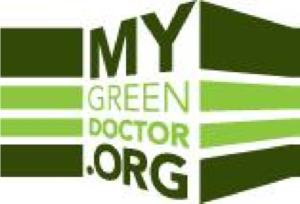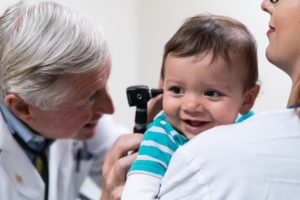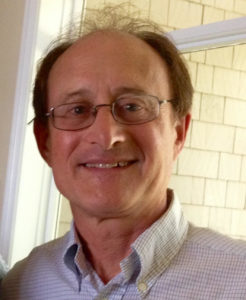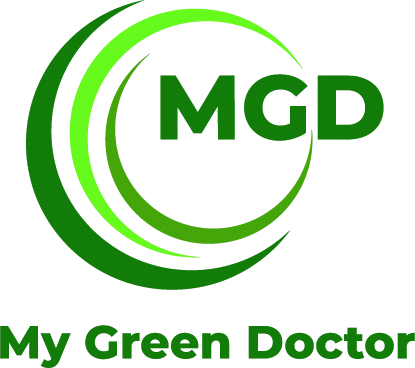The Environment & Healthcare: Do Our Choices Matter?
Todd L Sack MD FACP
World leaders are swarming to conferences to debate grand problems like COVID-19, poverty, inflation,
We face the same dilemmas in our medical practices. We use toxic cleaning products to wash our hands and create mountains of disposable patient gowns, gloves, and personal protection gear. We see lights left on in empty rooms, building thermostats set to “ice cold” in summer, bins of Styrofoam waste, inefficient vehicles in the hospital fleets and physician parking lots, and wasteful bottled water everywhere. With so many large challenges, does anything we do as individuals for the environment really matter?
Keep in mind that our healthcare delivery system takes a terrible toll on the environment. The United States healthcare system is responsible for about 10% of America’s smog-producing chemicals and the same share of greenhouse gases. And healthcare’s energy consumption and emissions grew by 28% over ten years at a time when total US energy use diminished slightly. The air pollution created by burning fossil fuels to support our industry is responsible for illnesses that cause a staggering 405,000 years of life lost annually in the US alone.
If You Work in a Hospital…
Hospitals in the U.S. are responsible for about a third of these emissions and perhaps 145,000 years of life lost each year. As bad as this seems, hospitals have tools and protocols at their disposal to enable them to use energy and other resources more efficiently. Organizations such as Health Care Without Harm, founded in 1996, help hospitals in more than fifty countries.

Your hospital can join Health Care Without Harm and send managers and physicians to its annual Spring meeting, CleanMed (https://cleanmed.org) where they will learn “best practices” for managing solid waste and energy, conserving water, sustainable procurement, and offering healthy foods.
Every large facility should have a Chief Sustainability Officer and Sustainability Committee that brings together managers from all departments. Why not join your hospital’s or medical school’s Sustainability Committee where you will meet remarkable people and help make important decisions?
If You Work in a Clinic or Office…
A meaningful share of air pollution worldwide is the result of outpatient healthcare: our medical clinics, offices, surgical centers, imaging departments, and dental practices. In the U.S., the outpatient share of healthcare’s pollution is 26%, almost equal to the share caused by hospitals.
There are important financial saving available to practices that make a sustained effort at “going green”. A five-office multi-specialty practice in Pensacola, Florida rolled up its sleeves to reduce its energy use and has been saving more than $14,000 each year on its electric bill. The fuel that did not need to be burned to make electricity was the equivalent of 4,340 gallons of gasoline and 85,600 pounds of carbon dioxide emissions per year. This level of energy efficiency extended over 10,000 medical offices– about 10% of American offices—would mean $140 million saved in energy costs and the equivalent of 43 million gallons of gasoline left unburned. The health benefits of burning less fossil fuel would be potent because offices and electric power plants tend to cluster in urban areas where people reside.
Does your healthcare practice have an environmental sustainability program? If not, My Green Doctor is a free, easy-to-use practice management program that is proven to work. The goal is not to accomplish just one or two projects, such as adjusting thermostats or recycling, but to achieve a sustainable , multifaceted program that is an integral part of your office’s day-to-day activities.
“The goal is a sustainable environmental sustainability program.”
Your first step is to register at My Green Doctor (https://www.MyGreenDoctor.org/ or https://www.MyGreenDoctor.es/ for Spanish), and to ask your practice manager to register as well. Offices learn how to add five minutes of My Green Doctor business to the agenda of every regular staff meeting. The “Meeting-by-Meeting Guide” provides a script for each meeting so there is nothing for your office manager to study in advance. The topics include energy and water use, recycling, wise uses of chemicals, renewable energy, transportation choices, green purchasing, healthy foods, and patient education. Most offices save money in the first month and they can qualify for the Green Doctor Office Certificate in as little as three months.
Health professionals are among the most trusted members of society. Nurses, doctors, and pharmacists are generally ranked as the top three professions, trusted more even than clergy, journalists, or elected leaders . Other surveys tell us that large majorities of nurses and physicians believe that they have a responsibility to explain to patients the health risks of environmental and climate change threats. Likewise, surveys report that patients are eager for this information. A recently published survey of 376 parents in U.S. pediatric offices asked about climate change teaching by their doctor. Eighty percent of parents agreed or strongly agreed that the impact of climate change on their child’s health should be presented, and yet only 4% recalled receiving this information in the prior twelve months.
A physician or nurse may see 3000 patients per year in the office. The average U.S. resident will visit an office-based physician two to three times per year, according to the Centers for Disease Control and Prevention, and wait an average of 18 minutes per visit. Patients are receptive to health information in the form of brochures, posters, and video screen presentations, and report that these improve patient satisfaction with the waiting room and with the visit experience. Even simple teaching measures, such as providing waiting room brochures for patients, can magnify dramatically your influence to improve the environment.
My Green Doctor offers dozens of free brochures, in English and Spanish, on topics such as wise energy use, “green” cleaning products, water conservation, heat-related illness, pharmaceuticals disposal, bottled water, and healthy foods. Please email My Green Doctor if you would like to receive free waiting room brochures by mail: mygreendr@gmail.com.
“Free waiting room brochures can be mailed to your office.”
Families may experience multiple health benefits from increased environmental literacy. For example, they will know how to protect themselves from heat-related illness, be prepared for extreme weather 
As a health professional, you can have an outsized influence upon the environmental health of your office and your community. The steps needed to achieve a sustainable environmental sustainability program are not difficult: register at My Green Doctor, ask your practice leaders to make sustainability a goal, add five minutes of My Green Doctor to each office meeting agenda, and make slow, steady improvements with the Meeting-by-Meeting Guide from My Green Doctor. Your choices do matter!

Keywords: #sustainability #climatechange #officemanagement #healthprofessionals #docsforclimate
Photo credit: Doctor, child, mother: Jenea Woods & Erin Jeffries, 2018


